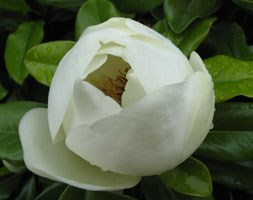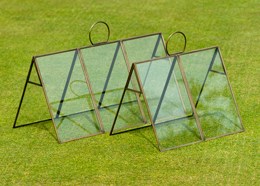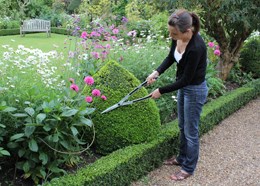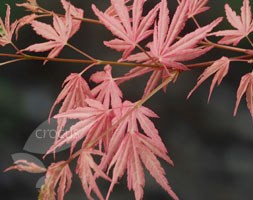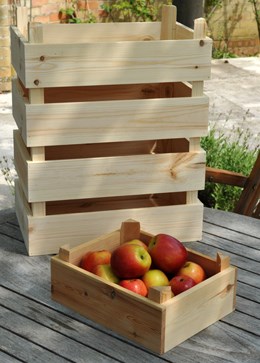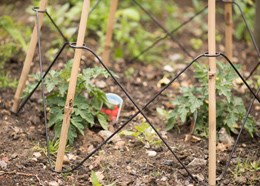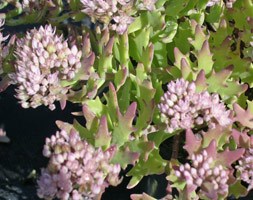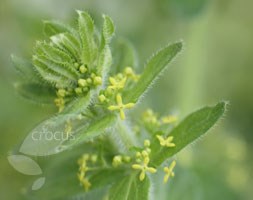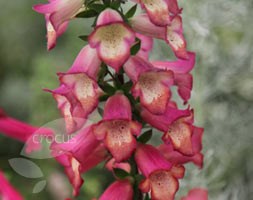New products at Crocus
by Sarah - February 20th, 2014.Filed under: Crocus, New Products.
New products at Crocus
Magnolia Baby Grand Magnolia (‘Strgra’) (PBR) (evergreen magnolia) £89.99
Position: full sun or partial shade Soil: any moist, well-drained soil, including chalky Rate of growth: slow-growing Flowering period: August to September Hardiness: fully hardy Garden care: Plant in a sheltered spot, away from strong winds. Requires minimal pruning. Remove any broken, diseased or crossing branches in spring. The best time to plant is in April, adding plenty of peat to the planting hole, in a sheltered spot. Mulch in spring with manure or leafmould, especially on dry soils.
Lily cloche £39.99
The shape of these cloches was inspired by the traditional lily cloche used in early Spring to protect tender young lily shoots that can be damaged by frost. The cloches are constructed from glass panels held in a tent shape over young plants by a brass frame work coated with an antique patina. They are perfect for use outdoors as they will age well creating a lovely but also useful detail in the garden. We offer this item in two sizes: Small: Height 29cm Length 40cm Width 28.5cm Large: Height 29cm Length 59.5cm Width 28.5cm
Lightweight shears £27.99
These lightweight shears are very easy to use as they weight less than 1 kilo which makes them easier to manoeuvre around the garden. They also have extra long handles for greater reach and razor sharp , replaceable carbon steel blades. Measurements: Small: Length 8 inches Large: Length 10 inches
Acer palmatum ‘Taylor’ (PBR) (Japanese maple) £19.99
Position: partial shade Soil: fertile, moist, well-drained neutral to acid soil Rate of growth: slow-growing Flowering period: April to May Flower colour: purple-red Other features: Hardiness: fully hardy Garden care: Add a top dressing of a multi-purpose fertiliser around the base of the plant in late spring. No routine pruning is required, just remove any dead, damaged or crossing branches in late autumn or winter when they are fully dormant.
Pine stacking storage box £12.99
Wonderfully useful, these sturdy storage boxes can be used to house all sorts of things including excess produce from the garden, bulbs and even messy paperwork. They will lock together, so you can form neat stacks up to 20 boxes tall. They are made from FSC Swedish redwood (pine), have been kiln dried, and have a lovely finish with no sharp edges. Add some scented pine cones for a decorative look at Christmas. Measures: 39cm long, 22.5cm wide, 13cm deep.
Bamboo cane anchoring system £11.99
These plant supports have been designed to help create a template and anchoring mechanism for building your own bamboo obelisks. They also make an attractive feature in the garden. They are made from a mild steel rod and finished with a lichen green powder coating. Available in three sizes for a variety of plant sizes. Measurements: Small: Height 15cm – Base diameter 40cm Medium: Height 18cm – Base diameter 57cm Large: Height 24cm – Base diameter 64cm
Sedum ‘Thundercloud’ (stonecrop) £9.99
Position: full sun Soil: moderately fertile, well-drained, neutral to slightly alkaline soil Rate of growth: average to fast-growing Flowering period: August to September Flower colour: pink-flushed white Other features: attractive to butterflies and bees; Hardiness: fully hardy In spring each year, fleshy grey-green foliage emerges and forms a perfectly neat dome, which will add structural interest towards the front of the border. As the summer progresses these domes become looser and a mass of small star-shaped flowers emerge, usually lasting well into autumn. A wonderful low-growing perennial that is useful for pots, or for adding late colour to the garden. Garden care: The flowerheads look great left during the winter to add shape and texture to your border. In February and March cut back the old flowerheads and apply a generous 5-7cm (2-3in) mulch of well-rotted garden compost or manure around the base of the plant. Once established, sedums can have a tendency to flop leaving an open and unsightly centre, especially in fertile soil. One technique to help prevent this is the ‘Chelsea chop’. During the last week of May (Chelsea Flower Show week), cut one in every three stems back to the ground. This will produce plants that are less lush and flower slightly later.
Cruciata laevipes ( (Syn. Galium cruciata)) £9.99
Position: full sun or partial shade Soil: tolerates most but prefers moist but well-drained, neutral or slightly alkaline soil Rate of growth: average Flowering period: April to June Hardiness: fully hardy Native to parts of the UK, this tufted perennial has upright hairy stems, that are surrounded by tiers of stalk-less leaves. In mid-spring to early summer, there are also whorls of star-shaped pale yellow flowers, which sit above each tier of leaves and have a honey-like scent. In its native environment, it colonises meadows, riverbanks and open scrub, so in a garden setting, this crosswort will thrive in relaibly moist but well-drained soil, that has a neutral to alkialine pH. Garden care: Lift and divide large clumps in autumn or early spring.
Digitalis Illumination Pink (‘Tmdgfp001’) (Illumination Series) (foxglove) £9.99
Position: full sun or partial shade Soil: moist, humus-rich soil Rate of growth: average to fast-growing Flowering period: June to July Hardiness: fully hardy Winner of a string of awards including the prestigeous Plant of the Year in 2012 at the RHS Chelsea Flower Show, this magnificent new foxglove is a real head-turner. It has exotic-looking flowers, which are a rich blend of sunset tones, and they appear for over a long period on sturdy, branching stems. These plants are mainly biennial so will flower in their second year and then die off. Garden care: Ensure that the soil is kept moist in summer. After flowering cut back the flowered spikes to encourage more sideshoots. Apply a generous 5-7cm (2-3in) mulch of well-rotted organic matter around the plant in early spring.







